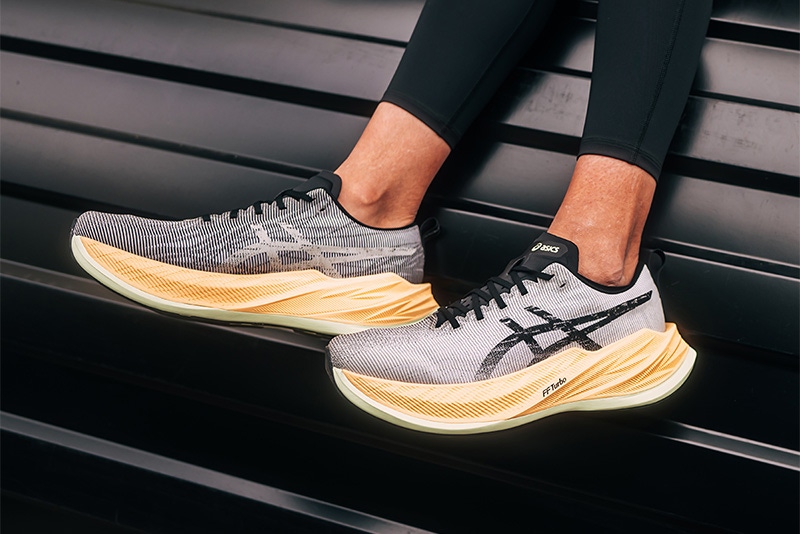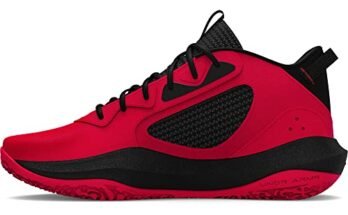Yes, running shoes can be used for walking as they provide comfort and support for both activities. Running shoes offer cushioning and stability, making them suitable for walking long distances or daily exercise routines.
The design of running shoes helps absorb impact and reduce strain on the feet, making them versatile for various physical activities. Whether you are walking for fitness or leisure, wearing running shoes can offer the necessary protection and comfort needed to support your feet and joints.
Additionally, the traction and durability of running shoes make them a practical choice for walking on different surfaces, ensuring a safe and enjoyable experience. So, next time you reach for your running shoes, know that they can serve you well during your walks too.
Benefits Of Using Running Shoes For Walking
Using running shoes for walking offers excellent cushioning and support, reducing the risk of foot and leg fatigue. The flexible design and lightweight construction of running shoes make them a comfortable choice for long walks, promoting better posture and minimizing strain on the joints.
Cushioning And Support
Running shoes are designed to offer cushioning and support, which can be beneficial for walking as well. The cushioning in running shoes helps to absorb the impact of each step, reducing the stress on your feet, ankles, and knees. The support offered by running shoes also helps to maintain proper alignment of your feet, which can prevent injuries and discomfort. If you have flat feet or high arches, running shoes can provide the necessary support to keep your feet comfortable and healthy.Durability And Longevity
Running shoes are typically made with durable materials that can withstand the wear and tear of regular use. This means that they can last longer than other types of shoes, making them a cost-effective choice for walkers. The longevity of running shoes also means that they can maintain their cushioning and support over time, ensuring that you get the most benefit from your investment. Additionally, running shoes are often designed with breathable materials that help to keep your feet cool and dry, making them comfortable to wear for extended periods.Conclusion
In summary, running shoes can be used for walking due to their cushioning, support, durability, and longevity. Whether you are a casual walker or a serious fitness enthusiast, choosing the right shoes can make all the difference in your comfort and performance. When selecting running shoes for walking, make sure to consider the fit, cushioning, and support to ensure that you get the most out of your footwear. With the right pair of running shoes, you can enjoy a comfortable and healthy walking experience.
Credit: www.asics.com
Differences Between Running And Walking Shoes
When it comes to choosing the right footwear for your fitness routine, it’s important to understand the differences between running and walking shoes. While they may look similar at first glance, these two types of shoes are designed with specific features to support the distinct biomechanics of each activity. From impact absorption to flexibility and stability, the design elements of running and walking shoes cater to the unique movement patterns associated with each exercise.
Impact Absorption
Running shoes are engineered to provide extra cushioning to absorb the impact of each stride, which is essential for the higher intensity and faster pace of running. On the other hand, walking shoes offer less cushioning as the impact of walking is significantly lower compared to running. The difference in impact absorption plays a crucial role in preventing discomfort and potential injuries during the respective activities.
Flexibility And Stability
Running shoes are designed with enhanced flexibility to accommodate the dynamic motion of the foot during the running gait cycle. They also prioritize stability to support the forward propulsion and lateral movements involved in running. In contrast, walking shoes prioritize stability over flexibility, providing a supportive base for the rolling motion of the foot during each step. This distinction ensures that the shoes align with the specific movement patterns of running and walking, optimizing comfort and performance.
Factors To Consider When Choosing Running Shoes For Walking
When choosing running shoes for walking, several factors should be taken into consideration to ensure comfort, support, and injury prevention. Understanding your walking style, foot arch, and pronation are crucial in selecting the right pair of running shoes for walking. Let’s delve into the key factors to consider when choosing running shoes for walking.
Walking Style And Speed
Your walking style and speed play a vital role in determining the type of running shoes that would best suit your needs. Those who walk at a brisk pace or have a more aggressive walking style might require running shoes with additional cushioning and support. Conversely, individuals with a more leisurely walking style may find a more lightweight and flexible running shoe to be sufficient.
Foot Arch And Pronation
Understanding your foot arch and pronation is essential when choosing running shoes for walking. Individuals with high, medium, or low arches require different levels of arch support in their shoes. Moreover, those who overpronate or underpronate will benefit from running shoes designed to correct these tendencies, providing stability and alignment during walking.
Credit: www.quora.com
Tips For Using Running Shoes For Walking
For walking, using running shoes can be beneficial due to their cushioning and support. However, it’s essential to ensure the shoes have proper arch support and flexibility to prevent discomfort or injuries during long walks. Remember to choose shoes that fit well to maximize comfort and performance.
When it comes to walking, it’s important to have the right shoes to ensure comfort and prevent injuries. While running shoes are designed for running, they can also be used for walking. However, there are some important things to keep in mind to ensure that you’re getting the most out of your shoes and keeping your feet healthy. Here are some tips for using running shoes for walking.Gradual Transition
If you’re transitioning from running to walking, it’s important to do so gradually. This will allow your feet and body to adjust to the new activity and prevent injuries. Start by walking for shorter distances and gradually increase the distance over time. This will also give you a chance to test out your running shoes and see how they feel when used for walking.Proper Fit And Sizing
One of the most important things when it comes to using running shoes for walking is ensuring that they fit properly. Make sure that you get your feet measured and choose the right size. Running shoes should fit snugly but not be too tight. Look for shoes with a wide toe box, which will allow your toes to spread out and prevent blisters and other foot problems. It’s also important to choose shoes with good arch support and cushioning, which will help prevent injuries and provide maximum comfort.Consider The Type Of Walking
Different types of walking require different types of shoes. If you’re walking on a treadmill or on flat surfaces, a regular running shoe will work well. However, if you’re doing a lot of walking on trails or uneven surfaces, you may want to consider a trail running shoe, which provides more support and stability. Similarly, if you’re doing a lot of walking on concrete or other hard surfaces, look for shoes with extra cushioning to prevent impact injuries. In conclusion, running shoes can be used for walking, but it’s important to choose the right shoes and take care of your feet. By following these tips, you can enjoy the benefits of walking while keeping your feet healthy and comfortable.Potential Risks Of Using Running Shoes For Walking
Using running shoes for walking poses potential risks due to the differences in design and functionality.
Increased Wear And Tear
Running shoes are designed for forward motion and may wear out quicker when used for walking.
Injury Risk
Using running shoes for walking can lead to discomfort or injury due to improper support and cushioning.
How To Care For Running Shoes When Used For Walking
How to Care for Running Shoes When Used for Walking
Running shoes can be used for walking, but they require special care to maintain their longevity and performance. Proper cleaning, maintenance, rotation, and replacement are essential to ensure your running shoes stay in top condition even when used for walking.
Cleaning And Maintenance
- Regularly clean your running shoes with mild soap and water.
- Avoid washing them in the washing machine to prevent damage.
- Air dry your shoes away from direct heat sources to preserve their materials.
- Inspect them regularly for any signs of wear and tear.
Rotation And Replacement
- Rotate between multiple pairs of running shoes to extend their lifespan.
- Replace your shoes every 300-500 miles to maintain optimal support and cushioning.
- Consider getting new insoles if the cushioning wears out.
- Donate or recycle old shoes responsibly to reduce waste.
Expert Opinions On Using Running Shoes For Walking
When it comes to choosing the right footwear for walking, expert opinions can provide valuable insights. Let’s explore what podiatrists and athletic trainers have to say about using running shoes for walking.
Podiatrists’ Recommendations
Podiatrists generally recommend wearing shoes specifically designed for walking to ensure proper support and cushioning. Running shoes are engineered to provide stability and shock absorption during the high-impact activity of running. However, for walking, they may not offer the ideal level of flexibility and motion control required for the lower-impact motion.
Athletic Trainers’ Insights
Athletic trainers emphasize the importance of footwear designed for the intended activity. While running shoes are constructed with features tailored to the biomechanics of running, they may lack the necessary support for the repetitive heel-to-toe motion of walking. The design differences in the midsole and outsole can impact the overall comfort and performance during walking.

Credit: www.fleetfeet.com
Frequently Asked Questions
Is It Good To Use Running Shoes For Walking?
Yes, running shoes can be good for walking due to their cushioning and support for the feet.
Can You Wear Running Shoes For Everyday Use?
Yes, you can wear running shoes for everyday use. They provide comfort and support for daily activities.
Can You Use The Same Shoes For Walking And Running?
Yes, you can use the same shoes for walking and running, but it’s better to have specific shoes for each activity to prevent injuries and ensure comfort.
Can You Use Old Running Shoes For Walking?
Yes, you can use old running shoes for walking as long as they are still supportive and comfortable.
Conclusion
Running shoes can definitely be used for walking. The key is finding the right fit and support for your walking style. By understanding your specific needs and choosing the appropriate features, you can comfortably and effectively use running shoes for your walking routine.


